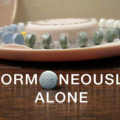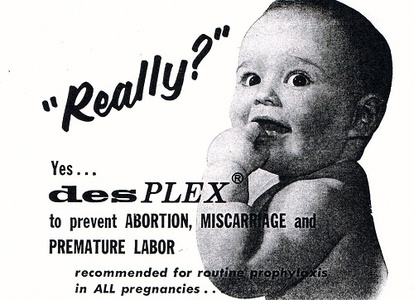It was two months since I had stopped taking The Pill. Might I add, I hate how culturally grammatical we have to be when we write, “The Pill”. THE Pill is how I read it. It’s 2019, and it all still seems so covertly retro. Anyway, it is hard to go back in time because the thoughts of what transpired the year I came off The Pill still overwhelm me. I had never really agreed with the notion of loading ourselves with synthetic hormone, and in fact, for 70% of my sexually active life, I used other very successful methods. Regardless, I was in my early 20’s, and like most, decided to hop on the Pill for a couple more years until I knew I had found the guy of my dreams. Well, the time came, I was in a great relationship, I felt safe and comfortable emotionally, as well as financially, and I made the choice to come off. I popped the last little pink pill on January 19th, 2017. Fast forward to March 10th, 2017 and here is where it all started.
Peripheral Nerve Symptoms
I woke up with severe, I can’t stress the word “severe” enough, pins and needles in my hands and feet. That feeling you get when you lay too long on a limb, numb it out, and then feel the tingling- that feeling. So, I thought I had slept weird, and continued on with my day, but by night, the severity hadn’t changed. I woke up the next morning, still feeling this tingling but it was now accompanied by extreme feelings of weakness in my arms and legs. The strange part was that I wasn’t actually weak. I was able to lift heavy items like normal, it was just the feeling of weakness. Did I have a stroke? This is where the anxiety started to kick in. I have struggled with anxiety my whole life but over the next 3 months, I had never experienced such an extreme form of anxiety and depression like this. I was in the prime of my life, 25 years old, and I had never felt worse. I had this intense tingling in my hands and feet, weakness throughout my arms and legs, and an unremitting dismal and gloomy cloud following me. I started to research, and although mistakenly started to self-diagnose with brain tumors, Multiple Sclerosis, Lupus, Autoimmune, I ultimately thought I was deficient in electrolytes or vitamins, and bought a Gatorade. Well, that didn’t help either.
Brain Fog and Depersonalization
I decided to take a few days off from work, get a massage and do a few yoga classes. It was a week since these feelings started, and the brain fog was coming in strong. If anyone has ever had this brain fog symptom, I would almost say it’s more debilitating than depression itself. The cloud of depression that hangs over your head is now in your head. Brain fog is like depersonalization, you’re really not sure if you’re even here on this earth, you feel so distant and detached from life, it’s scary. The massage helped me feel a bit better, not so tense, I was able to take a few deep breaths and have a few seconds of peace. When I went into the yoga classes, I would sit in the back. My goal was just to breathe and relax my body and my mind. Well, the second the teacher started, I had waterfalls of tears flowing out of my eyes. Until this day, I couldn’t tell you why that was happening in each class but if that’s not a major sign of depression, I don’t know what is.
Buzzing Bees in My Spine and Brain
The tingling and weakness wasn’t going away. It was now the end of April and my period was two weeks late. I then started to wake up in the middle of the night with a feeling of buzzing bees up my spine and in my brain. The feeling was so off-putting and disturbing, I couldn’t fall back asleep. I would get hot flashes- peri-menopause? At 25? No way. My eyes would randomly hurt. My teeth would randomly hurt. I would have crazy sinus issues. There were times where I was so tired I would take the day off because I couldn’t move. I felt debilitated. I was not myself. I even thought about going on disability.
Could it be the Pill? Absolutely Not, Says Every Doctor.
All my life healthy, I was a kickboxing instructor, an everyday gym goer, something was just not right. It was time to go to the doctor. Getting an urgent appointment with the Gyno is nearly a battle in itself, especially when you call and say, “Something weird is going on in my body, I’m not sure what it is”. Next appointment, 3 weeks away. So I went to the walk in clinic near my house, blood pressure: 150/110. I had never seen such high numbers. Diagnoses – anxiety, solution-anti depressants. No thank you. Something more was going on inside. I have been getting my period almost to the day since I was 12 years old, that’s 13 years of consistency. I’m not pregnant and 2 weeks late? No, something is wrong hormonally. I went to my primary care physician. They did blood work, checked me up and down – nothing. Again, my blood pressure read: 145/108, diagnoses-anxiety, solution-relax. I went to the Gyno, and was told “there’s no way these symptoms are from coming off The Pill.” Shocked, I asked why it couldn’t be, she replied, “The Pill is something that needs to be taken every day because it gets metabolized within 24 hours, so if you haven’t taken a pill since January, it’s no longer in your system. You should get other testing done.” I know that, I did that, but trying to convince someone with a much higher education in this field, an expert in fact, was going nowhere. I knew it was up to me to do my own research and trust what my body was telling me.
Women Know Better
I hopped back online and googled, “hormonal imbalance symptoms”, “after the pill reactions”, “what birth control really does to you”- the list goes on. It had been four months since these symptoms started. I finally came across an amazing blog post where there were 10 pages of women expressing the same symptoms as me after coming off the Pill. It was the most comforting moment of my life. I knew I wasn’t making these symptoms up. This wasn’t all anxiety. This was real; for me, for them, for everyone who had come off the Pill and felt a huge difference in their body. In my adult years, I shied away from publicly posting my feelings and connecting with people virtually, but, I felt like if I didn’t participate, if I didn’t help, that would just be immoral and unethical.
What was interesting to me was that we all initially thought MS or brain tumor. All of our symptoms happened about two months after we took the last pill and all of the symptoms lasted on average 8-9 months. Almost all of us had blood work, CT scans, MRI’s, and all of us came back negative on every test. We exchanged advice about best foods, herbs, and practices that were helping us, and consoled each other in this grueling sea of unknown. Every one of us were told that it wasn’t due to coming off The Pill, and every one of us didn’t believe it. It was from The Pill, it is from The Pill.
Ultimately, this takes time, a healthy lifestyle and patience. Some doctors will say, go back on the Pill to help it, but that seems counter-intuitive to me. When this reaction becomes so real and tormenting, the Pill is the most frightening thing and the furthest from the cure or the answer. I’ve researched endlessly for the past two years, and only recently see the term coined, “Post Birth Control Syndrome”. It’s catchy, for sure, but the description isn’t quite as accurate. There are weirder, stranger symptoms that happen than just the irregular periods, acne, and weight change; that to me seems like it skims the surface, that’s easy stuff comparably.
I’m happy to report that I feel back to normal, but this experience will never leave my mind. Through it all, I feel the injustices for women are brought about because of a terrible patient care system with limited time and awareness in an ever turning patient revolving door. I produced a documentary entitled, “Hormoneously Alone,” now out on YouTube, to shed light on these issues among others involving The Pill.
We’re all in this together, but with the lack of education, awareness and openness, we all may as well be alone.
If you or someone you know has had similar experiences coming off of the Pill, or if you would like to share your story, message me here, I would love to hear from you.
In Health,
Raquel Latona
We Need Your Help
More people than ever are reading Hormones Matter, a testament to the need for independent voices in health and medicine. We are not funded and accept limited advertising. Unlike many health sites, we don’t force you to purchase a subscription. We believe health information should be open to all. If you read Hormones Matter, like it, please help support it. Contribute now.
Yes, I would like to support Hormones Matter.
If you would like to publish your experience with hormonal birth control on Hormones Matter, send us a note here.
Image created using Canva AI.































